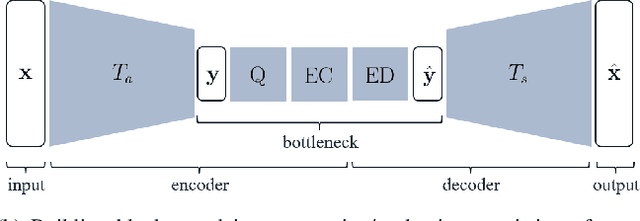Ankitesh K. Singh
A Combined Deep Learning based End-to-End Video Coding Architecture for YUV Color Space
Apr 01, 2021



Abstract:Most of the existing deep learning based end-to-end video coding (DLEC) architectures are designed specifically for RGB color format, yet the video coding standards, including H.264/AVC, H.265/HEVC and H.266/VVC developed over past few decades, have been designed primarily for YUV 4:2:0 format, where the chrominance (U and V) components are subsampled to achieve superior compression performances considering the human visual system. While a broad number of papers on DLEC compare these two distinct coding schemes in RGB domain, it is ideal to have a common evaluation framework in YUV 4:2:0 domain for a more fair comparison. This paper introduces a new DLEC architecture for video coding to effectively support YUV 4:2:0 and compares its performance against the HEVC standard under a common evaluation framework. The experimental results on YUV 4:2:0 video sequences show that the proposed architecture can outperform HEVC in intra-frame coding, however inter-frame coding is not as efficient on contrary to the RGB coding results reported in recent papers.
Transform Network Architectures for Deep Learning based End-to-End Image/Video Coding in Subsampled Color Spaces
Feb 27, 2021



Abstract:Most of the existing deep learning based end-to-end image/video coding (DLEC) architectures are designed for non-subsampled RGB color format. However, in order to achieve a superior coding performance, many state-of-the-art block-based compression standards such as High Efficiency Video Coding (HEVC/H.265) and Versatile Video Coding (VVC/H.266) are designed primarily for YUV 4:2:0 format, where U and V components are subsampled by considering the human visual system. This paper investigates various DLEC designs to support YUV 4:2:0 format by comparing their performance against the main profiles of HEVC and VVC standards under a common evaluation framework. Moreover, a new transform network architecture is proposed to improve the efficiency of coding YUV 4:2:0 data. The experimental results on YUV 4:2:0 datasets show that the proposed architecture significantly outperforms naive extensions of existing architectures designed for RGB format and achieves about 10% average BD-rate improvement over the intra-frame coding in HEVC.
 Add to Chrome
Add to Chrome Add to Firefox
Add to Firefox Add to Edge
Add to Edge